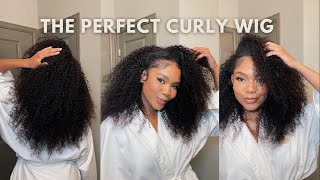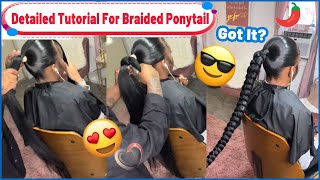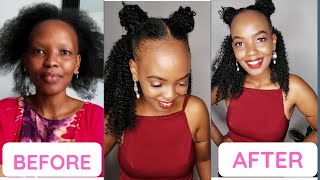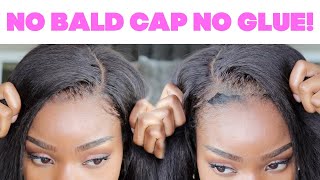8 Tips To Make Your Transition From Relaxed To Natural Hair Breakage Free
 Just like moving home, transitioning to natural hair is a big deal and extremely stressful to many of us starting the journey.
Just like moving home, transitioning to natural hair is a big deal and extremely stressful to many of us starting the journey.
The purpose of this article is to provide you with the right tools (knowledge) to guide you through so that you are able to keep your length until you are ready to chop those relaxed ends off.
With that thought, here are 8 great tips to make your transition from relaxed to natural easy and breakage free.
1. Don’t forget the protein – Transitioning hair will without a doubt need some strength in the form of protein.
The idea here is to eliminate the damage caused by chemicals with intense protein treatments, moisture and trimming.
As you develop your routine you will realize that there is a huge balancing act between protein and moisture and with practice you will eventually learn how much protein you will need to maintain your hair’s health and strength.
Protein is never bad, after all that is what our hair is made of! The trick is finding the right protein for you.
2. Low manipulation and protective hairstyles – Transitioning is the perfect time to start handling your hair with kid gloves if you had not done so before.
Your hair is at its weakest at the point where the natural hair meets the chemically processed hair so you want to manipulate your hair as little as possible. Practice styles that allow you to wear the style all week. This could mean loose buns, braids, flexi rods*, roller sets, twist etc.
Note that I don’t mean the teeny tiny micro braids which often cause more harm than good. I mean reasonably sized braids that should be worn for a maximum of 8 weeks at a time with a 2 week rest period between installs.
Read this post for further information on the best braid size to choose to support your hair journey.
3. Invest in GREAT detangling tools – The goal is to reduce breakage and damage to the hair as much as you possibly can. Invest in great tools such as a wide tooth detangling combs, a Denman brush or even good quality seamless combs*.
Do your research to find the best tool for your hair. Pick tools that will suit your natural hair even though your hair might be predominantly chemically processed at this point. Fingers are great detanglers too! And free!
4. Silk pillowcase, satin bonnets*, satin scarves – Keeping with the ‘great tool’ theme, get familiar with the value of silk and satin on your tresses. Satin/silk unlike its cottony counter parts keeps your hair intact by maintaining moisture levels in your hair instead of robbing it and making it dry.
 5. Avoid heat – It might be tempting to straighten your hair so that you can match both textures but avoiding heat will prevent a lot of the breakage associated with over-processed relaxed hair and allow for the protein treatments to do their job at mending the damage.
5. Avoid heat – It might be tempting to straighten your hair so that you can match both textures but avoiding heat will prevent a lot of the breakage associated with over-processed relaxed hair and allow for the protein treatments to do their job at mending the damage.
The weakest part of your hair, near the line of demarcation should be protected from breakage and adding heat will only exacerbate any damage that may occur through manipulation. After all, who wants to transition into heat damaged hair?
6. Deep condition regularly – Deep conditioning helps to maintain the moisture levels in the hair and is just great for overall hair health. Deep conditioning* can be done over night or for as little as 15 minutes depending on the product and the needs of your hair.
Hair steaming can be an awesome treat for transitioning hair, if you decide to invest in a steamer* add essential oils* as this will help you relax as you keep your hair healthy.
7. Wash hair in sections – This is the best advice any natural could receive and is great for transitioners to practice for when that thick lush natural hair begins to form the majority of your tresses.
A smaller section means easier detangling and makes application of product thorough and complete. Determine how many sections are best for you, four or eight whatever works!
8. Co-wash and try a sulfate free shampoo* – Co washing does not strip the hair of its natural oils* and is a quick way to add moisture to your hair when you don’t have the time to invest in a full wash.
Using a sulfate free shampoo cleanses the hair without stripping it and can be very beneficial to the health of your hair. Determine how often you would like to co-wash and how often you need to shampoo, some opt for weekly shampoo regimens, others do it monthly. It depends on your hair and it’s needs.
Bonus Tip
9. Use the right products – Made for purpose black hair products that help in your transition are also pretty popular these days. From detanglers that help you deal with both textures easily to products that give your relaxed hair strength to prevent excess breakage while styling.
There are even entire transitioning kits that help cleanse and hydrate both textures and take a lot of the guesswork out of your new hair journey. Just do your research and I’m sure that your transition will be a breeze!
Further reading on transitioning to natural:
Transitioning 101 – A Complete Guide To Switching From Relaxer To Natural Hair Part 1
Transitioning 101 – A Complete Guide To Switching From Relaxer To Natural Hair Part 2
Transitioning From Relaxed To Natural Hair
Why So Many Fail In Their Transition To Natural




